
punch

Bowled over by
Punch
Travel through time and revel in a gentle dose of nostalgia by revisiting punch, the mass tipple that was designed to be shared, as Tshepang Molisana writes.
There are few things that can be shared that will make for memorable experiences.
For instance, sharing popcorn on a first date to the movies creates a tangible reminder of the halcyon days of innocent young love, never to be forgotten. Cutting and sharing a wedding cake creates a moment that remains in a couple’s wedding photo items for a lifetime. Even the biblical account of Jesus sharing a handful of fish and loaves of bread with a sizable crowd is an account that continues to be told throughout the world.
While popcorn, cake, bread and fish are collectively enjoyed in memorable ways, the history of punch reveals that the world’s first cocktail was designed to be shared.
"German adventurer, Johan Albert de Mandelslo who managed a factory in Surat, India, described punch in 1638 as “a kind of drink consisting of aqua vitae, rose-water, juice of citrons and sugar.”
Punch is rising in popularity in bars and households across the world as the pleasure of punch is shared, as it was historically. It’s why the expression “as pleased as punch” came into common usage, not so? (Ed: Actually not… that expression comes from the Punch and Judy show, since Punch took great delight in his naughty deeds!)
While history is fuzzy on the origin of punch, the first printed record of it dates back to 1632.
In his book Punch, David Wondrich alleges that the mixed drink travelled the world with sailors from the British East India Company. According to Wondrich, Robert Addams who was stationed in India as a member of the British East India Company wrote to a colleague about punch on 28 September 1632.
Initially, punch was generally a drink that consisted of five ingredients: spirits, citrus, water, sweetener and possibly spice. German adventurer, Johan Albert de Mandelslo who managed a factory in Surat, India, described punch in 1638 as “a kind of drink consisting of aqua vitae, rose-water, juice of citrons and sugar.”
Mandelslo’s account supports the assertion that sailors drank the citric mix to ward off scurvy while sailing on long-voyages throughout the world.
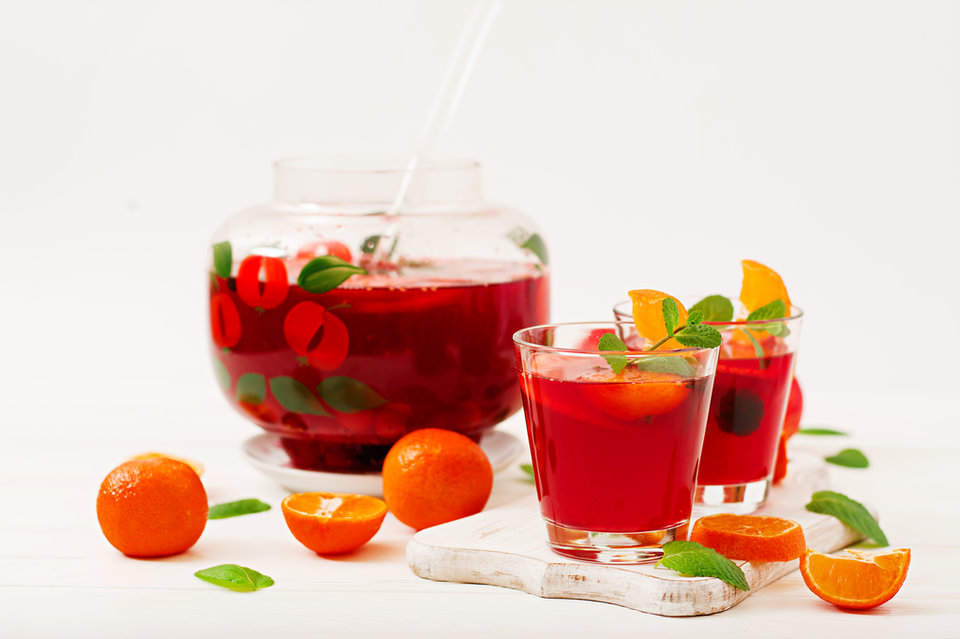
While modern spirits have become tame and even refined, the spirits of the 1600’s were described as fiery. The punch mixture emerged as a means of taming the spirits, which would have shortened the sailor and merchants’ lengthy sea-voyages.
According to Simon Difford, in History of punch, the spirit ingredients also supported how punch became a shared-tipple.
David Wondrich describes the spirits in Asia as “Batavia arrack in Indonesia and coconut arrack in India” which travelled with the merchants in various ways. When the merchants returned to the London ports with some of the arrack and other ingredients, they attracted visitors. Investors who had financed the ships would board the ships with their friends and share this communal beverage.
Punch drinking caught on throughout London and gained popularity with English aristocrats. The spirits, tea, sugar and nutmeg were expensive ingredients, which led to recipes being adapted to suit the budgets of the non-aristocracy.
As England colonised sugar-producing nations, rum from Jamaica and Mauritius became the ingredient to substitute for the expensive French brandy that had become popular as the main component in punches.
Rum punch is described by Jeff Berry in his introduction to Potions of the Caribbean as “rum mixed with sugar and lime.”
Rum punch became a drink of diplomacy in America as it rose in global popularity. David Wondrich writes that in 1783, New York State’s Governor welcomed the French ambassador with 30 bowls of rum punch for a room of 120 guests. That punch was supported by 135 bottles of Madeira, 36 bottles of Port and 60 bottles of beer. In 1785, a party of 80 drank 74 bowls of punch to celebrate the ordination of a New England minister.
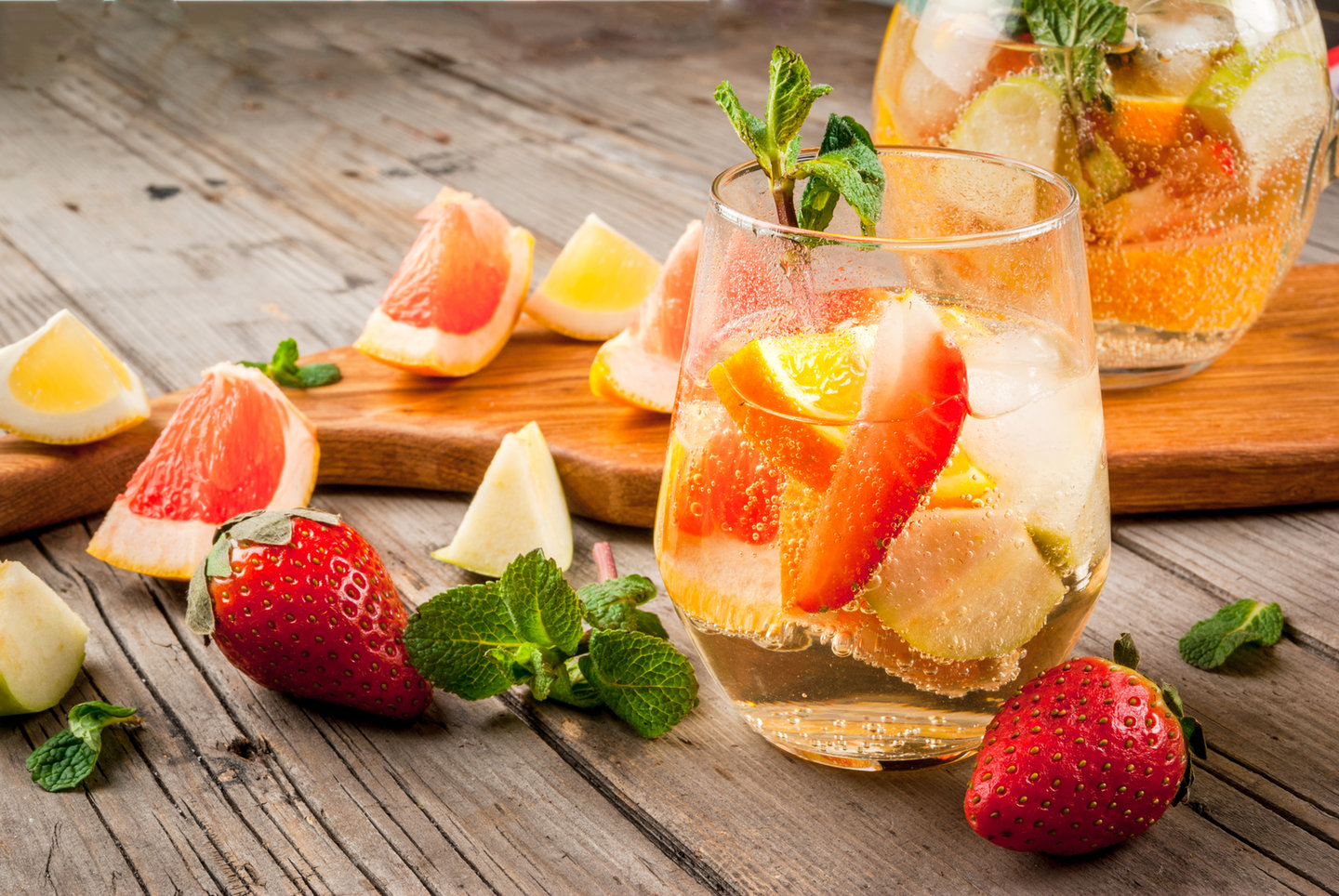
America had embraced punch with such fervour that 76 bowls of punch were drunk by the founding fathers and their fellows at the signing of The Declaration of Independence.
However, punch waned in popularity due to its laborious mixing and steeping process. In America, the rise of the industrial revolution called for more urgency and less time spent at leisure. In England the Victorian era ushered in greater temperance and less drinking.
Charles Dickens wrote a piece titled “A Bowl of Punch” in the magazine Household Words, that punch bowls which once lined the shelves in bars were stacked and uncalled for.
Dicken’s lament was supported by a letter to a friend where he shared a recipe that consisted of cognac, rum, citrus and sugar. According to Punch magazine, this face-warming recipe was cooked by “setting the spirit mix on fire”.
While a heat-proof bowl might be your friend when concocting this mixture, Dickens assured his friend that it might make her “for 90 years […] a beautiful Punchmaker in more senses than one.”
Pack a Punch with Simple Recipes

Virgin sangria
Boil rooibos tea with slices of fresh ginger. Mix four cups of this strong ginger-and-rooibos tea mixture with 125ml of sugar, 10 raspberries and once the sugar has dissolved, allow it to cool. Pour the mixture into a large punch bowl with four cups of assorted sliced fruits (oranges, lemon, strawberries and kiwis) with two cups of orange juice and two cups of lime cordial. Serve with ice.
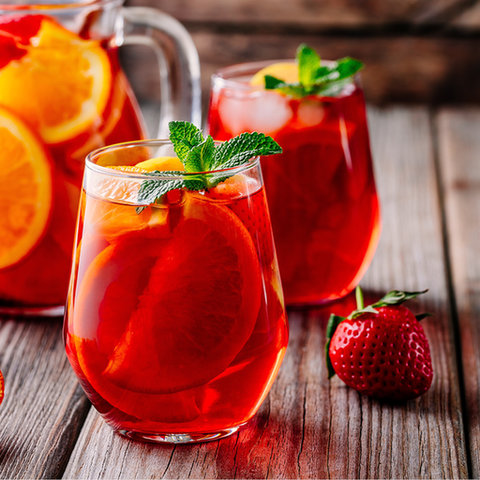
Red wine sangria
Mix a 750ml bottle of red wine with half a cup of orange juice, half a cup of ginger ale and half a cup of rum together. Pour the mixture into a large punch bowl with four cups of assorted fruits (sliced plums, sliced oranges, sliced green apple) and allow to settle and cool for two hours. Serve with ice.
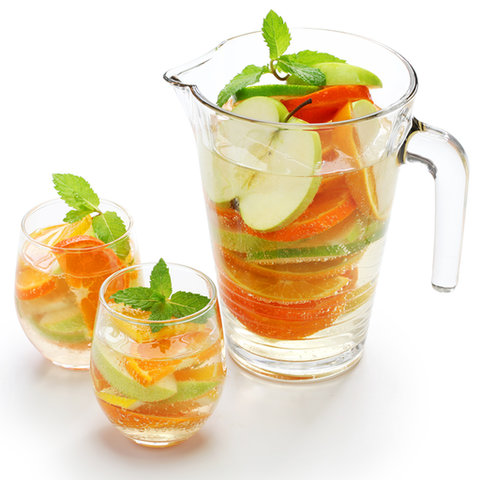
White wine sangria
Mix a 750ml bottle of white wine with 125ml of vodka, 125ml of elderflower liqueur and two cups of ginger ale. Pour the mixture into a large punch bowl and add assorted fruits (sliced peaches, sliced oranges, sliced green apple). Allow to settle and cool for two hours, serve over ice.
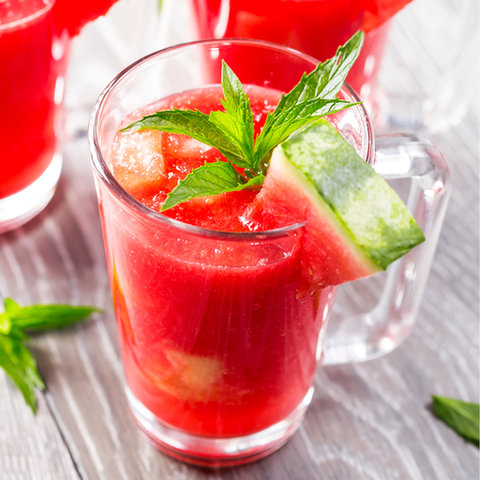
Watermelon punch
Cube, peel and seed a watermelon. Freeze half of the cubes, liquidise the remaining half. Pour the liquid half of the watermelon into a punch bowl. Add two cups of vodka, one cup of lime cordial and one cup of ginger ale. Pour the frozen watermelon cubes into the punch bowl, add lime slices and mint leaves before serving.
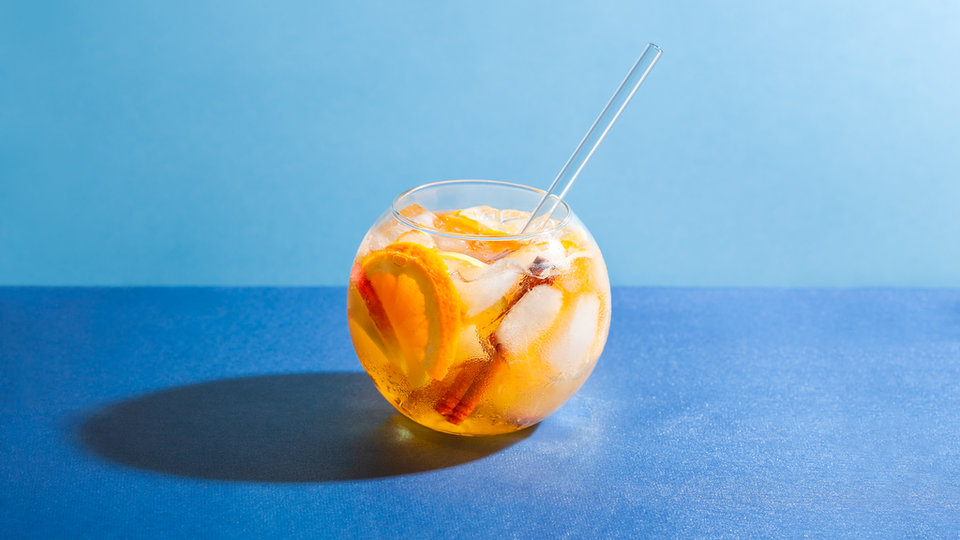
Classic five ingredient punch
Pour four cups of rum, one litre of orange juice, one litre of water and one cup of sugar into a large punch bowl. Stir well, add several cinnamon sticks. Serve over ice.